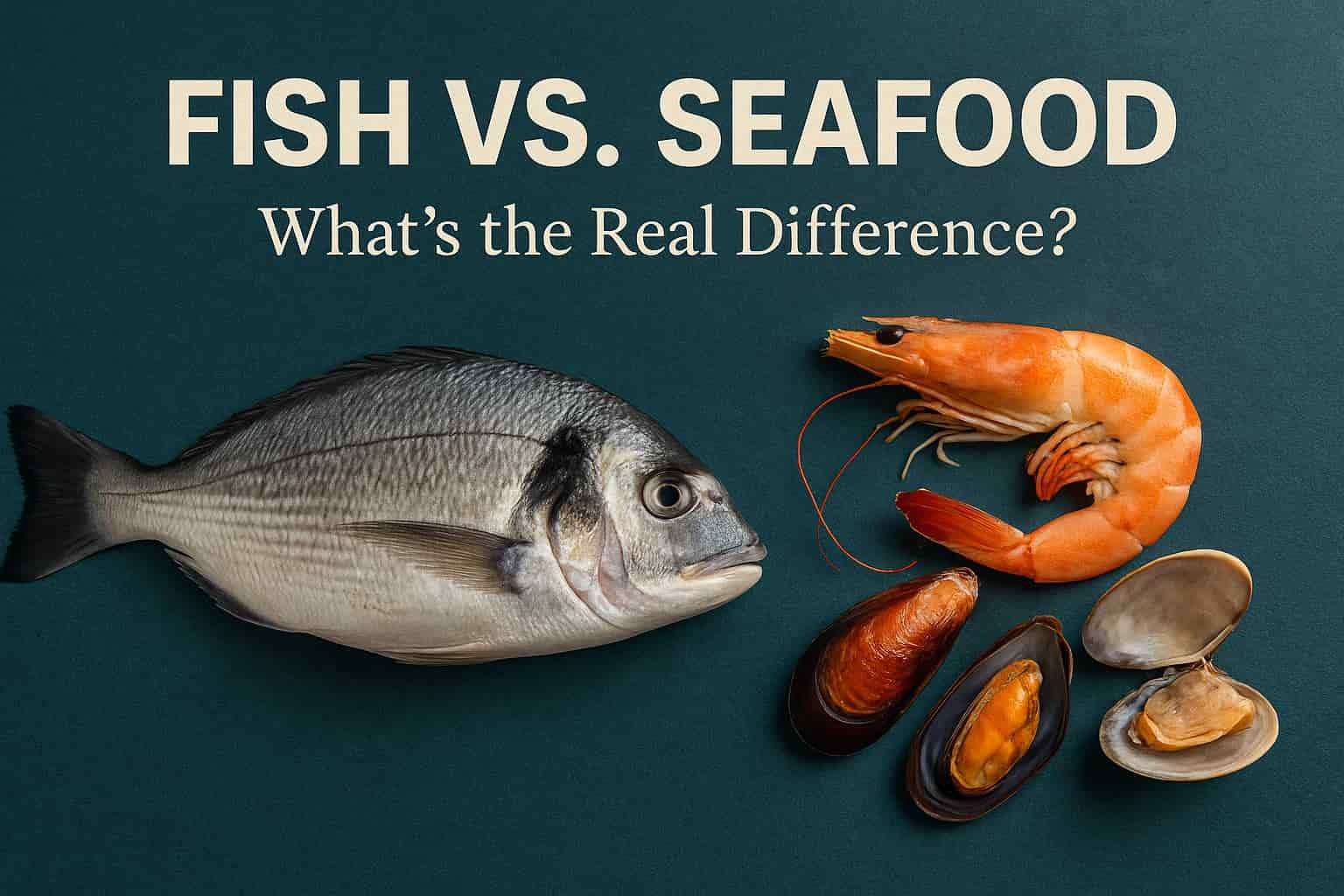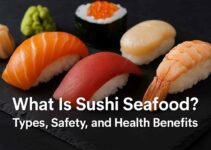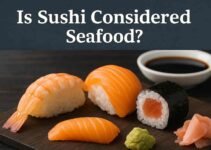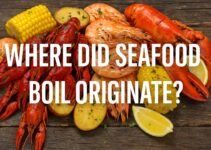Many people use the terms “fish” and “seafood” interchangeably, but they are not the same thing. While fish are indeed part of the broader category of seafood, not all seafood is fish. Understanding this distinction is important for a variety of reasons, including dietary choices, allergies, cultural practices, and nutritional value.
Whether you’re preparing a meal, managing dietary restrictions, or simply expanding your knowledge of food categories, knowing the difference between fish and seafood can help you make more informed decisions. This article will explore their definitions, classifications, biological distinctions, and cultural implications. By the end, you’ll have a clear understanding of what sets fish apart from other types of seafood—and why that difference matters.
Contents
What is Considered Fish?
From a biological standpoint, fish are cold-blooded vertebrates that live in water and breathe through gills. They typically have fins and scales, though there are exceptions. Fish are divided into two primary groups: bony fish (like salmon, tuna, and trout) and cartilaginous fish (like sharks and rays). Most of the fish we consume fall into the bony category.
In culinary terms, “fish” refers to any edible aquatic vertebrate that is not a mammal. These animals are typically caught in oceans, rivers, or lakes and are a staple in diets around the world due to their high protein content and healthy fats—especially omega-3 fatty acids.
Examples of popular fish include:
- Salmon
- Cod
- Haddock
- Tilapia
- Mackerel
- Tuna
These species are widely used in a variety of dishes, from grilled fillets to sushi.
What is Considered Seafood?
Seafood is a broader culinary term that includes all edible marine life, both vertebrates and invertebrates. This category encompasses fish but also includes a wide range of non-fish species such as shellfish (e.g., shrimp, crab, clams, mussels), cephalopods (e.g., squid, octopus), and other marine animals like sea urchins or sea cucumbers.
In essence, all fish are seafood, but not all seafood are fish. Seafood can be divided into three main categories:
- Fish – vertebrate aquatic animals
- Shellfish – crustaceans (shrimp, lobster, crab) and mollusks (clams, oysters, scallops)
- Other marine animals – squid, octopus, sea cucumbers, and more
This distinction is especially important in cooking, religious dietary laws, and allergen labeling. For example, someone allergic to shellfish may be able to eat fish safely, but not shrimp or clams.
Biological and Taxonomic Differences
The most fundamental distinction between fish and seafood lies in their biological classification. Fish are vertebrate animals within the subphylum Vertebrata, possessing a backbone, gills, and a closed circulatory system. They are classified under the superclass Pisces and are divided into various taxonomic groups based on their skeletal structure and evolutionary lineage.
In contrast, many types of seafood—such as shellfish—are invertebrates, meaning they lack a backbone. These include animals from entirely different phyla such as:
- Arthropoda (e.g., shrimp, crabs, lobsters – crustaceans)
- Mollusca (e.g., clams, oysters, scallops – mollusks)
- Cephalopoda (e.g., squid, octopus – advanced mollusks)
So, while all fish fall under a specific biological class, seafood encompasses a diverse group of marine species that may have little to no biological relation to fish. This explains why fish and shellfish vary so greatly in anatomy, texture, and even the way our bodies digest and react to them.
Culinary Differences
In the kitchen, the difference between fish and other types of seafood is not just semantic—it affects flavor, preparation methods, and even how meals are served. Fish are generally mild to moderately strong in flavor, with variations depending on fat content and species. Common preparations include grilling, pan-searing, baking, and raw preparations like sashimi.
On the other hand, shellfish and other seafood offer a different set of textures and flavors:
- Crustaceans like lobster and shrimp are often sweet and firm
- Mollusks like clams and mussels have a briny, chewy texture
- Cephalopods like octopus and squid are more complex to prepare due to their toughness if overcooked
Moreover, seafood allergies are often specific to shellfish. It’s common for someone to tolerate fish but have a serious allergic reaction to shellfish. For this reason, ingredient labeling and menu clarity are essential.
The culinary world distinguishes these groups for both safety and taste preference. Chefs often specialize in either fish or shellfish because their handling and flavor profiles differ significantly.
Cultural and Religious Considerations
In many cultures and religions, the distinction between fish and seafood carries significant meaning. For example:
- In Judaism, fish with fins and scales are considered kosher, but shellfish like shrimp, lobster, and clams are not permitted.
- In Islam, fish are generally halal, but opinions differ regarding shellfish. Some scholars permit all seafood, while others restrict shellfish consumption.
- In Christian fasting traditions, particularly during Lent, fish is often allowed while meat and other forms of seafood are restricted.
These dietary rules have shaped cuisine and seafood consumption around the world. In East Asia, both fish and shellfish are heavily used, but specific species carry symbolic meanings. In Mediterranean cultures, fish is a staple of religious observance and feasts.
Understanding these distinctions isn’t just a matter of science—it helps respect dietary customs, avoid health risks, and appreciate the role of seafood in human traditions.
Nutritional Differences
When it comes to nutrition, both fish and other types of seafood offer impressive health benefits, but their nutritional profiles can vary significantly depending on the species.
Protein, Fat, and Calorie Content
Fish—especially fatty varieties like salmon, mackerel, and sardines—are known for being rich in high-quality protein and omega-3 fatty acids, which contribute to heart and brain health. Lean fish such as cod and tilapia are lower in fat and calories but still provide excellent protein content.
Shellfish, on the other hand, such as shrimp, crab, and scallops, are also good sources of lean protein but typically contain less fat and fewer omega-3s than oily fish. However, some shellfish can be higher in cholesterol, though research shows this doesn’t significantly impact blood cholesterol for most people.
Micronutrients and Health Benefits
Seafood—especially shellfish—is particularly rich in micronutrients such as:
- Zinc
- Iron
- Vitamin B12
- Iodine
- Selenium
Fish and shellfish alike are low in saturated fats and are often recommended in dietary guidelines as part of a balanced diet. Including a variety of both fish and other seafood can provide a broader range of essential nutrients.
Seafood Categories Explained
To further understand the difference between fish and seafood, it helps to break down the subcategories within seafood. While all fish are seafood, not all seafood are fish. Here’s a closer look at the main types of seafood:
Types of Shellfish
Shellfish are invertebrates and are generally divided into two main types:
- Crustaceans: This group includes animals with segmented bodies and exoskeletons such as:
- Shrimp
- Lobster
- Crabs
- Mollusks: These soft-bodied animals often have a shell and include:
- Clams
- Oysters
- Mussels
- Scallops
Each type has a unique texture, flavor profile, and method of preparation.
Other Edible Marine Creatures
There are other marine animals that are considered seafood but are neither fish nor traditional shellfish. These include:
- Cephalopods: such as squid and octopus, known for their chewy texture and savory flavor
- Sea cucumbers and sea urchins: prized in certain Asian cuisines
These animals are a niche part of the seafood category but are increasingly found in global cuisine.
Common Misconceptions
Many people harbor misconceptions about what constitutes fish versus seafood. Clearing up these myths is important for both culinary understanding and health awareness.
- “Fish and seafood are the same thing”
→ This is only partially true. While all fish are seafood, not all seafood are fish. The term “seafood” includes many non-fish marine animals, such as shrimp and clams. - “All seafood is shellfish”
→ Incorrect. Shellfish are a subset of seafood. Fish, cephalopods, and other sea creatures are not considered shellfish. - “Shellfish are a type of fish”
→ False. Shellfish are invertebrates and belong to entirely different biological phyla. They lack a backbone, unlike true fish.
These misunderstandings can lead to dietary mistakes, especially when allergies, religious practices, or cultural expectations are involved. By clarifying these points, individuals can make more informed food choices and avoid confusion.
Summary Table: Fish vs. Seafood
To help clarify the distinctions discussed throughout this article, here is a side-by-side comparison of fish and seafood:
| Criteria | Fish | Seafood |
|---|---|---|
| Definition | Aquatic vertebrates with gills, fins, and backbone | All edible marine life, including fish, shellfish, and others |
| Biological Class | Vertebrates (Superclass: Pisces) | Includes both vertebrates and invertebrates |
| Examples | Salmon, cod, tuna, trout | Shrimp, clams, squid, lobster, salmon, tuna |
| Nutritional Focus | Rich in omega-3s, lean protein | High in protein, minerals, B12, iodine |
| Allergy Risk | Generally lower | Higher, especially with shellfish |
| Culinary Use | Grilled, baked, sashimi, fried | Soups, pasta, steamed dishes, raw (e.g., oysters, sushi) |
| Religious Factors | Often accepted in many faiths | Sometimes restricted (e.g., shellfish in kosher diets) |
Conclusion
While the terms “fish” and “seafood” are often used interchangeably, they refer to distinct categories of marine life. Fish are a specific group of aquatic vertebrates, whereas seafood is a broader term that includes fish as well as shellfish, cephalopods, and other edible marine animals.
Understanding this distinction has practical implications—from choosing the right ingredients in cooking, navigating dietary restrictions, to respecting religious practices and managing allergens. By clearly recognizing the differences, you can make informed, safe, and culturally aware decisions regarding your food.
Whether you’re a home cook, a seafood enthusiast, or someone with specific dietary needs, this knowledge empowers you to better appreciate the rich diversity of food from the sea.
FAQs
Is fish a type of seafood?
Yes. All fish are considered seafood, but seafood also includes other marine animals like shellfish and squid. Think of seafood as the umbrella term, with fish being one category underneath it.
Are shellfish considered fish?
No. Shellfish such as shrimp, crabs, and clams are invertebrates and are biologically distinct from fish. While both fall under the culinary category of seafood, they are not the same scientifically.
Why are some people allergic to seafood but not fish?
Seafood allergies often involve shellfish, which contain different proteins than fish. A person might tolerate fish like salmon or cod but experience severe reactions to shrimp or crab.
Is squid a fish or seafood?
Squid is seafood, but not a fish. It belongs to the cephalopod class within the mollusk phylum. It has no bones and is anatomically very different from fish.
Can vegetarians eat fish?
No. Fish are animals and thus not considered vegetarian. However, some people follow a pescatarian diet, which includes fish and seafood but excludes other meat sources.



